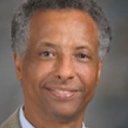Central pain.
关键词
抽象
OBJECTIVE
As a result of its accompanying co-morbidity, our lack of understanding regarding its mechanisms, and its resistance to conventional treatment, central pain is one of the most formidable challenges pain physicians are faced with. The objective of this review is to summarize recent advances in our understanding of the etiology, clinical presentation, and treatment of central pain, with special emphasis being placed on studies published within the past year.
RESULTS
Recent evidence suggests that not only injuries commonly associated with central pain, such as strokes and spinal cord lesions, but also disorders such as fibromyalgia, phantom limb pain and tension-type headaches may involve central phenomena. Perhaps because of the lack of clinical trials, treatment is still largely based on traditional prescribing methods and anecdotal evidence. Recent studies have indicated possible roles for tricyclic antidepressants, anti-seizure medications, and motor cortex stimulation in the treatment of central pain.
CONCLUSIONS
Injury to the spinothalamocortical pathways is a necessary, but not sufficient factor in the pathogenesis of central pain. Perhaps because of the similarities in mechanisms, there is considerable overlap between effective treatments for central pain and those for peripheral neuropathic pain. Our poor understanding of the etiology of central pain and the relative lack of effective treatments emphasize the need for further research into this elusive disorder.


